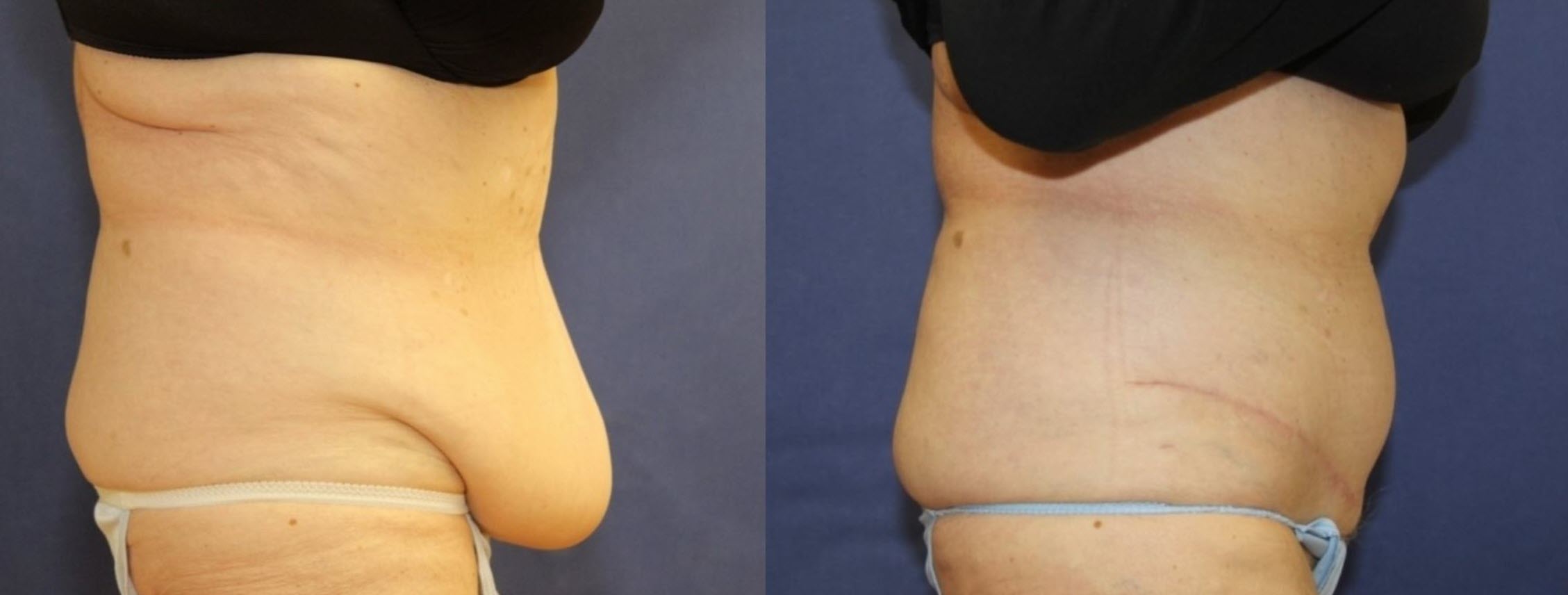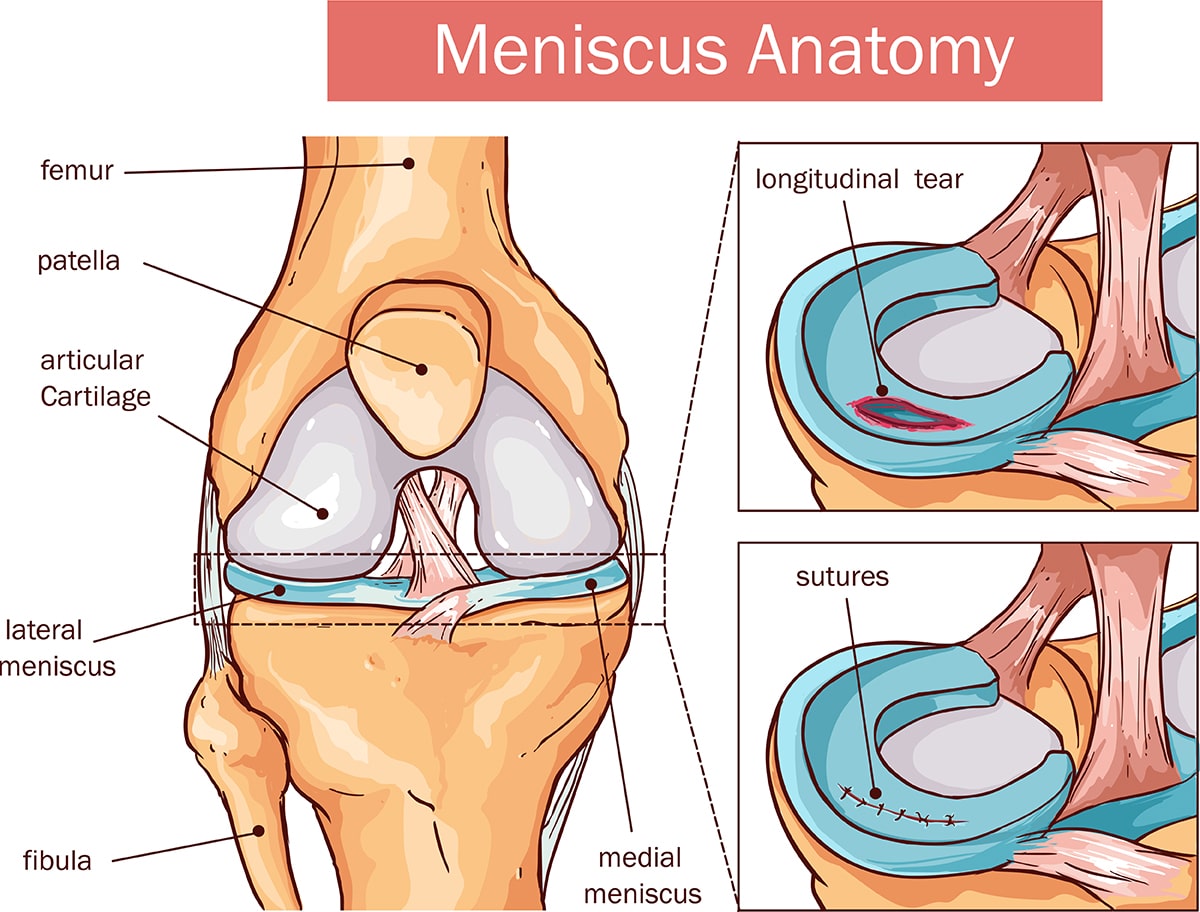

Finance
How Much Is Fibroid Surgery With Insurance?
Published: November 12, 2023
Find out how much fibroid surgery costs with insurance and explore various financial options for covering the expenses.
(Many of the links in this article redirect to a specific reviewed product. Your purchase of these products through affiliate links helps to generate commission for LiveWell, at no extra cost. Learn more)
Table of Contents
Introduction
Dealing with uterine fibroids can be both physically and emotionally challenging for women. These noncancerous growths in the uterus can cause various symptoms such as heavy menstrual bleeding, pelvic pain, and frequent urination. When noninvasive treatments fail to provide relief, fibroid surgery may be recommended by healthcare professionals.
However, one important consideration for many women is the cost of fibroid surgery. The expenses associated with this procedure can vary greatly, depending on several factors, including insurance coverage. In this article, we will explore how much fibroid surgery typically costs with insurance and how insurance coverage affects the overall expenses.
Before diving into the specific costs, it is crucial to have a basic understanding of what fibroids are and the different surgical options available. Fibroids, also known as leiomyomas, are benign tumors that develop in and around the uterus. They can vary in size and number, and while some women may not experience any symptoms, others may find fibroids to be disruptive to their daily lives.
When conservative treatments like medication or hormone therapy fail to alleviate symptoms, fibroid surgery may become necessary. There are several types of fibroid surgeries, each tailored to the individual needs of the patient. Common procedures include:
- Myomectomy: This surgical procedure involves the removal of fibroids while preserving the uterus. It is typically performed for women who wish to preserve fertility or maintain their reproductive organs.
- Hysterectomy: This is a more extensive procedure where the entire uterus is removed. It can be a recommended option for women who no longer desire pregnancy or who have severe symptoms caused by fibroids.
- Uterine Artery Embolization (UAE): This is a minimally invasive procedure that involves blocking the blood supply to the fibroids, causing them to shrink and die.
Understanding Fibroids
Fibroids, also known as uterine leiomyomas, are noncancerous tumors that develop in the uterus. They are made up of muscle and fibrous tissue and can vary in size, ranging from small seedlings to large masses. While the exact cause of fibroids is unknown, factors such as hormonal imbalances, genetics, and estrogen levels are believed to play a role in their development.
It is estimated that up to 80% of women will develop fibroids by the age of 50, although not all will experience symptoms. When symptoms do occur, they can vary greatly depending on the size, location, and number of fibroids present. Common symptoms include:
- Heavy menstrual bleeding: Fibroids can cause excessive and prolonged menstrual bleeding, leading to anemia and fatigue.
- Pelvic pain and pressure: Large fibroids can exert pressure on surrounding organs, causing pelvic discomfort and pain.
- Urinary and bowel issues: Fibroids can press against the bladder and bowel, resulting in frequent urination, difficulty emptying the bladder, and constipation.
- Infertility or pregnancy complications: Depending on their location, fibroids can interfere with conception or cause complications during pregnancy, such as miscarriages or preterm labor.
Diagnosing fibroids usually involves a pelvic examination, followed by imaging tests such as ultrasounds or MRIs to determine the size, location, and number of fibroids present. Treatment options will vary depending on the individual’s symptoms, age, desire for future pregnancies, and overall health.
In many cases, conservative treatments such as medication or hormone therapy can help manage symptoms and reduce the size of fibroids. However, if symptoms persist or worsen, or if there are concerns of fertility or other complications, fibroid surgery may be recommended.
It is important to consult with a healthcare professional who specializes in treating fibroids to determine the most appropriate course of action. They will consider various factors, including the size and location of the fibroids, the severity of symptoms, and the patient’s individual circumstances.
Understanding the nature of fibroids and their potential impact on one’s health and quality of life is the first step in seeking the necessary treatment. With this knowledge, individuals can make informed decisions about their healthcare options and find the best approach to managing their fibroids.
Types of Fibroid Surgeries
When conservative treatments fail to provide relief from fibroid symptoms, surgical intervention may be necessary. There are several types of fibroid surgeries available, each tailored to the individual needs and circumstances of the patient. The choice of procedure depends on factors such as the size, number, and location of the fibroids, as well as the patient’s desire for future fertility.
Here are three common types of fibroid surgeries:
- Myomectomy: This surgical procedure involves the removal of fibroids while preserving the uterus. It is typically recommended for women who wish to preserve their fertility or maintain their reproductive organs. Myomectomy can be performed through different approaches, including:
- –Abdominal myomectomy: This is a traditional open surgery where the fibroids are removed through an incision in the abdomen. It is usually recommended for larger fibroids or when there are multiple fibroids present.
- –Laparoscopic myomectomy: This is a minimally invasive procedure where small incisions are made in the abdomen, and a laparoscope and specialized surgical tools are used to remove the fibroids.
- –Hysteroscopic myomectomy: This procedure is performed using a hysteroscope, a thin tube with a camera inserted through the vagina and cervix. It is used for fibroids that are located inside the uterus.
- Hysterectomy: This is a more extensive procedure where the entire uterus is removed. It is considered a definitive treatment for fibroids, as it eliminates the possibility of fibroid recurrence. Hysterectomy may be recommended for women who no longer desire pregnancy, have completed their family, or have severe symptoms that do not respond to other treatments. There are different approaches to hysterectomy, including:
- –Abdominal hysterectomy: This involves a larger incision in the abdomen, often recommended for larger fibroids or when additional complications are present.
- –Vaginal hysterectomy: In this procedure, the uterus is removed through the vagina, resulting in no visible external scarring.
- –Laparoscopic hysterectomy: This is a minimally invasive approach where small incisions are made in the abdomen, and specialized tools and a laparoscope are used to remove the uterus.
- Uterine Artery Embolization (UAE): Also known as uterine fibroid embolization (UFE), this is a minimally invasive procedure that involves blocking the blood supply to the fibroids. A catheter is inserted into the blood vessels supplying the fibroids, and small particles are injected to block the vessels, causing the fibroids to shrink and die. UAE is a non-surgical alternative to myomectomy or hysterectomy and is often recommended for women who want to avoid surgery or preserve their fertility.
It is essential to consult with a specialist to determine the most suitable surgical option based on individual circumstances, desired outcomes, and potential risks or complications.
Factors Affecting the Cost of Fibroid Surgery with Insurance
The cost of fibroid surgery with insurance can vary significantly depending on several factors. Understanding these factors is crucial for individuals seeking fibroid surgery and navigating the potential financial implications. Here are some key factors that influence the cost:
- Insurance Coverage: The extent of insurance coverage plays a significant role in determining the out-of-pocket expenses for fibroid surgery. Different insurance plans have varying levels of coverage for surgical procedures, and it is essential to review the policy details to understand what is covered and what costs will need to be borne by the patient.
- Surgical Procedure: The specific type of fibroid surgery chosen will impact the overall cost. Procedures like myomectomy and hysterectomy, which involve more extensive surgical intervention, are generally more expensive than less invasive options like uterine artery embolization (UAE).
- Hospital/Facility Fees: The choice of hospital or surgical facility can significantly affect the cost of fibroid surgery. Different hospitals have varying pricing structures, and the fees associated with the use of operating rooms, recovery facilities, and other medical services can impact the final bill.
- Surgeon’s Fees: The experience and expertise of the surgeon performing the fibroid surgery can influence the cost. Highly skilled surgeons with a strong reputation may charge higher fees for their services compared to less experienced practitioners.
- Preoperative and Postoperative Care: The cost of fibroid surgery extends beyond the procedure itself. Preoperative tests, consultations, medications, and postoperative care, including follow-up visits and any necessary rehabilitation or physical therapy, can add to the overall expense.
- Complications or Additional Procedures: In some cases, complications may arise during the surgery or require additional procedures to address unforeseen issues. These unexpected factors can increase the cost of fibroid surgery.
It is important to note that the cost of fibroid surgery without insurance can be significantly higher than with insurance coverage. Insurance plans negotiate rates with hospitals and providers, which can help reduce the overall cost. However, there may still be deductibles, co-pays, and other out-of-pocket expenses that the patient will need to consider.
Before proceeding with fibroid surgery, it is recommended to contact the insurance provider and the hospital or surgical facility to get a clear understanding of the estimated costs, coverage details, and potential financial responsibilities.
Overall, the cost of fibroid surgery with insurance is influenced by various factors, and understanding them can help individuals prepare financially and make informed decisions about their healthcare options.
Average Cost of Fibroid Surgery with Insurance
The average cost of fibroid surgery with insurance can vary depending on several factors, including the type of surgery, insurance coverage, geographical location, and individual circumstances. It is important to note that these figures are general estimates and can vary significantly.
A myomectomy, which involves the removal of fibroids while preserving the uterus, can range in cost from $5,000 to $10,000 for patients with insurance coverage. However, the cost can be higher for more complex cases or if additional procedures, such as repairing the uterine wall or treating adhesions, are required.
Hysterectomy, which involves the complete removal of the uterus, tends to be more expensive than myomectomy. The cost can range from $10,000 to $15,000 with insurance coverage. Factors such as the surgical approach, the need for additional procedures, and the complexity of the surgery can impact the final cost.
Uterine artery embolization (UAE), a non-surgical alternative to myomectomy or hysterectomy, can cost between $6,000 and $10,000 with insurance coverage. This procedure involves blocking the blood supply to the fibroids, causing them to shrink and die. The cost can vary depending on the specific technique used and the healthcare provider.
It is important to consider that these estimates do not include additional expenses such as hospital or facility fees, surgeon’s fees, anesthesiologist fees, preoperative and postoperative care, medications, and follow-up visits. These additional costs can vary significantly and should be factored into the overall budget for fibroid surgery.
Insurance coverage can help reduce the out-of-pocket expenses for fibroid surgery. However, it is crucial to review the insurance policy carefully to understand the coverage details, including deductibles, co-pays, and any limits or restrictions on specific procedures or providers.
It is worth mentioning that the above estimates are based on averages and can vary significantly depending on location, facility, surgeon’s fees, individual insurance plans, and any complications or additional procedures that may arise during the surgery.
It is highly recommended to consult with healthcare providers, including surgeons and insurance professionals, to get personalized cost estimates based on individual circumstances and insurance coverage.
How Insurance Coverage Affects the Cost of Fibroid Surgery
Insurance coverage plays a significant role in determining the cost of fibroid surgery for individuals seeking treatment. The extent of coverage can greatly impact the out-of-pocket expenses associated with the procedure. Here are a few ways in which insurance coverage affects the cost of fibroid surgery:
Provider Network: Insurance plans typically have a network of preferred healthcare providers, including hospitals and surgeons. Choosing an in-network provider can result in lower costs as insurance plans negotiate discounted rates with these providers. It is important to check with the insurance provider to ensure that the chosen surgeon and facility are within the network to maximize coverage and minimize costs.
Deductibles: Insurance plans often have deductibles, which are the amount the insured individual must pay out-of-pocket before the insurance coverage kicks in. The deductible can vary greatly depending on the insurance plan and is an important factor to consider when assessing the cost of fibroid surgery. Once the deductible is met, insurance coverage can help reduce the overall cost of the procedure.
Co-Pays and Co-Insurance: Co-pays and co-insurance are additional payments that the insured individual is responsible for. Co-pays are fixed amounts paid for each visit or service received, while co-insurance is a percentage of the overall cost that the insured individual must pay. The specific amounts and requirements for co-pays and co-insurance vary depending on the insurance plan. Understanding these additional costs is important when calculating the total expenses for fibroid surgery.
Coverage Limits: Insurance plans may have limits on the coverage amount for specific procedures or treatments. It is essential to review the insurance policy to understand any restrictions or limits on coverage for fibroid surgery. Some plans may have a maximum coverage amount or limit the number of procedures covered per year. Being aware of these limitations can help manage expectations and plan accordingly.
Preauthorization Requirements: Insurance plans often require preauthorization for certain procedures, including fibroid surgery. Preauthorization involves obtaining approval from the insurance company before the surgery takes place. Failure to obtain preauthorization may result in reduced coverage or denial of the claim, potentially leading to higher out-of-pocket expenses for the individual.
Out-of-Network Coverage: In some cases, individuals may choose to receive care from a provider or facility that is outside of their insurance network. Out-of-network coverage typically results in higher costs as the negotiated rates do not apply, and the individual may be responsible for a greater portion of the expenses. It is important to understand the out-of-network coverage details provided by the insurance plan to avoid unexpected financial burdens.
Understanding the specific details of insurance coverage, including network providers, deductibles, co-pays, coverage limits, and preauthorization requirements, is instrumental in estimating the costs of fibroid surgery. It is advisable to contact the insurance provider directly to obtain accurate information and ensure a clear understanding of the financial responsibilities associated with the procedure.
Tips for Reducing the Cost of Fibroid Surgery
Fibroid surgery can be a significant financial investment, but there are strategies that individuals can employ to help reduce the overall cost. Here are some tips to consider when seeking to minimize expenses associated with fibroid surgery:
- Review Insurance Coverage: Carefully review your insurance policy to understand the coverage details, including deductibles, co-pays, and coverage limits. Knowing what your insurance covers and what you are responsible for can help you plan and budget accordingly.
- Choose In-Network Providers: Select healthcare providers, including surgeons and hospitals, that are within your insurance network. In-network providers have negotiated rates with the insurance company, which can result in significant cost savings for you.
- Utilize Preauthorization: Make sure to obtain preauthorization from your insurance company before undergoing fibroid surgery. This ensures that the procedure is medically necessary and covered by your insurance, reducing the risk of claim denials or reduced coverage.
- Explore Cost-Effective Treatment Options: Discuss different treatment options with your healthcare provider to identify the most cost-effective approach. Depending on your circumstances, alternatives to traditional surgery, such as uterine artery embolization, may be suitable and potentially less expensive.
- Research and Compare Costs: Check with multiple hospitals, surgical facilities, and providers to compare costs. Pricing can vary, even within the same geographical area. Researching and comparing costs can help you find more affordable options without compromising on quality of care.
- Ask About Financial Assistance Programs: Inquire about any financial assistance programs offered by hospitals or surgical facilities. Some organizations have resources available to help individuals manage the cost of medical procedures, including fibroid surgery.
- Consider Clinical Trials or Research Studies: Explore the possibility of participating in clinical trials or research studies related to fibroid surgery. In some cases, these programs offer reduced or even free surgeries as part of their research protocols.
- Schedule Surgery at Ambulatory Surgery Centers: Consider having the surgery performed at an ambulatory surgery center rather than a hospital. Ambulatory surgery centers tend to have lower associated costs, which can help reduce the overall expense of the procedure.
- Communicate with Your Healthcare Provider: Openly discuss the financial aspects of fibroid surgery with your healthcare provider. They may be able to provide guidance, suggest more cost-effective options, or help navigate the insurance process to minimize expenses.
It is important to remember that while reducing costs is necessary, prioritizing the quality of care you receive should also be a top consideration. Finding the right balance between cost and quality can help ensure the best possible outcome for fibroid surgery.
By following these tips and actively engaging in financial planning, individuals can better manage the costs associated with fibroid surgery, making it more accessible and affordable.
Conclusion
Fibroid surgery is an important treatment option for individuals experiencing significant symptoms and complications from uterine fibroids. However, the cost of fibroid surgery with insurance can vary depending on various factors, including insurance coverage, type of surgery, hospital fees, and individual circumstances. Understanding these factors is crucial in planning for the financial aspects of fibroid surgery.
While the average cost of fibroid surgery with insurance can range from several thousand to tens of thousands of dollars, it is important to consider that these estimates are general and can vary significantly. Insurance coverage plays a critical role in determining the out-of-pocket expenses, with factors such as deductibles, co-pays, and coverage limits influencing the overall cost.
There are ways to reduce the cost of fibroid surgery, including reviewing insurance coverage, choosing in-network providers, exploring cost-effective treatment options, and researching and comparing costs. Additionally, enquiring about financial assistance programs, considering clinical trials or research studies, and communicating openly with healthcare providers can help individuals navigate the financial aspects of fibroid surgery.
Ultimately, the cost of fibroid surgery should not deter individuals from seeking necessary treatment. It is important to prioritize both financial planning and quality healthcare to ensure the best possible outcome. Consulting with healthcare professionals and insurance providers can provide valuable guidance and support in managing the cost of fibroid surgery.
Remember, every individual’s situation is unique, and it is essential to gather specific information and personalized estimates to accurately plan for the financial aspect of fibroid surgery. By being proactive and well-informed, individuals can make confident decisions regarding their treatment and minimize potential financial burdens.














